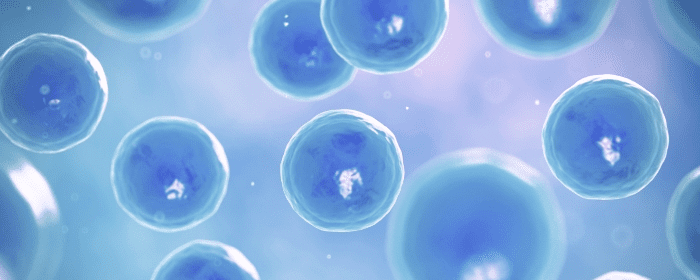Because of its ability to simultaneously activate multiple mechanisms, including paracrine, trophic, immunomodulatory, and differentiation, researchers consider mesenchymal stem cells to be an effective option for stem cell therapy.
After years of active research, bone marrow-derived MSCs (BM-MSCs) have been a prevalent source for MSC-based studies. There is also active research using MSCs from a variety of other sources, including adipose tissue, peripheral and umbilical cord blood, amniotic fluid, skin, dental pulp, synovium, umbilical cord tissue, placental complex, and endometrium.
As part of this review, Arutyunyan et al. review umbilical cord-derived MSCs (UC-MSCs) as a prospective source for MSC-based therapy. More specifically, the authors focus on the potential therapeutic benefits of Wharton’s jelly, the gelatinous substance found in the umbilical cord stroma; of particular interest to researchers is the presence of mesenchymal-derived cells, including stem cells, with the absence of capillaries.
When studied in vitro, researchers found UC-MSCs demonstrated the ability to differentiate into a wide range of cells, including chondrocytes, adipocytes, osteoblasts, odontoblast-like cells, dermal fibroblasts, smooth muscle cells, and somatostatin-producing cells, sweat gland cells, endothelial cells, neuroglia cells, and dopaminergic neurons.
While it’s well known that MSCs produce a variety of bioactive compounds that supply a paracrine mechanism for their therapeutic activity, researchers have learned that UC-MSCs secretomes differ significantly from MSCs from bone marrow and adipose. Specifically, the most significant difference is UC-MSCs’ nearly complete absence of synthesis of the main proangiogenic factor, VEGF-A. UC-MSCs also demonstrate increased production of antiangiogenic factors when compared to BM-MSCs and AT-MSCs.
UC-MSCs have recently demonstrated the ability to transfer their own mitochondria into mitochondrial DNA-depleted cells. This observation has broad implications for the therapeutic potential of UC-MSCs, primarily due to the failure of mitochondria as an initial event in many diseases. In this regard, the authors conclude that the transfer of mitochondria provides a rationale for the therapeutic use of UC-MSCs for ischemic injury or disease linked to mitochondrial dysfunction.
Arutyunyan et al. found recent animal model preclinical studies regarding the use of UC-MSCs for the treatment of different diseases demonstrated promising results. Additionally, clinical studies involving UC-MSCs demonstrated to be safe with no significant side effects other than fever.
While the authors point out concern with the lack of standardized protocols for the isolation and expansion of UC-MSCs and of uniform requirements for the final product. Despite these concerns, the authors also conclude that the results of clinical trials using UC-MSCs are encouraging, particularly for the treatment of autoimmune and endocrine diseases.
Source: “Umbilical Cord as Prospective Source for Mesenchymal Stem Cell ….” 29 Aug. 2016, https://www.hindawi.com/journals/sci/2016/6901286/.


 St. Petersburg, Florida
St. Petersburg, Florida
